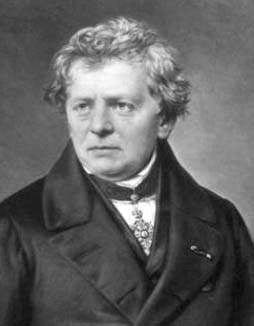Electrical resistance
Electrical resistance expresses the obstacle of an electric flow.In short,it means the degree to which a current may flow.
The unit is Ω which expresses electrical resistance.
Ohm's law
This equation is very famous. is Ohm`s law.
is Ohm`s law.R=resistance(Ω)、V=voltage(V)、I=electric current(A)
It expresses that?electric current is proportional to the added voltage and? inverse proportion to resistance.?
Georg Simon Ohm (1789~1854)

He studied about Volta's battery While working as a German physicist's high school teacher.
In 1827,he found the law showing the fundamental relation of electricity, voltage, and resistance.
But,to tell the truth,Before Ohm's law was announced, there was a person who has already discovered the law.
↓
Henry Cavendish (1731~1810)

He is a British chemist and a physicist.
He was born to the aristocrat's family line and learned in Cambridge University.
Henry had already discovered Ohm's law in 1781.
The cause of electrical resistance
In short,electrical resistance is brought about because electronic movement is barred.The main causes are based on vibration of heat.
Here,we focused on metal.
In the case of metal
Many metal atoms gather.↓
A valence electron is emitted, respectively.
↓
Metal becomes a positive ion.?
↓
It is arranged regularly.
The emitted valence electron is called a free electron.
Moreover, the positive ion is carrying out thermal agitation.
When thermal agitation bars a motion of a free electron, resistance occurs.
Resistance is strong if it is high temperature more.

【Reference】
電気の歴史イラスト館
?http://www.tele.soumu.go.jp/kids/time2/time2.htmWikipedia
http://ja.wikipedia.org/wiki/ゲオルク・ジモン・オーム
http://ja.wikipedia.org/wiki/ヘンリー・キャヴェンディッシュ

